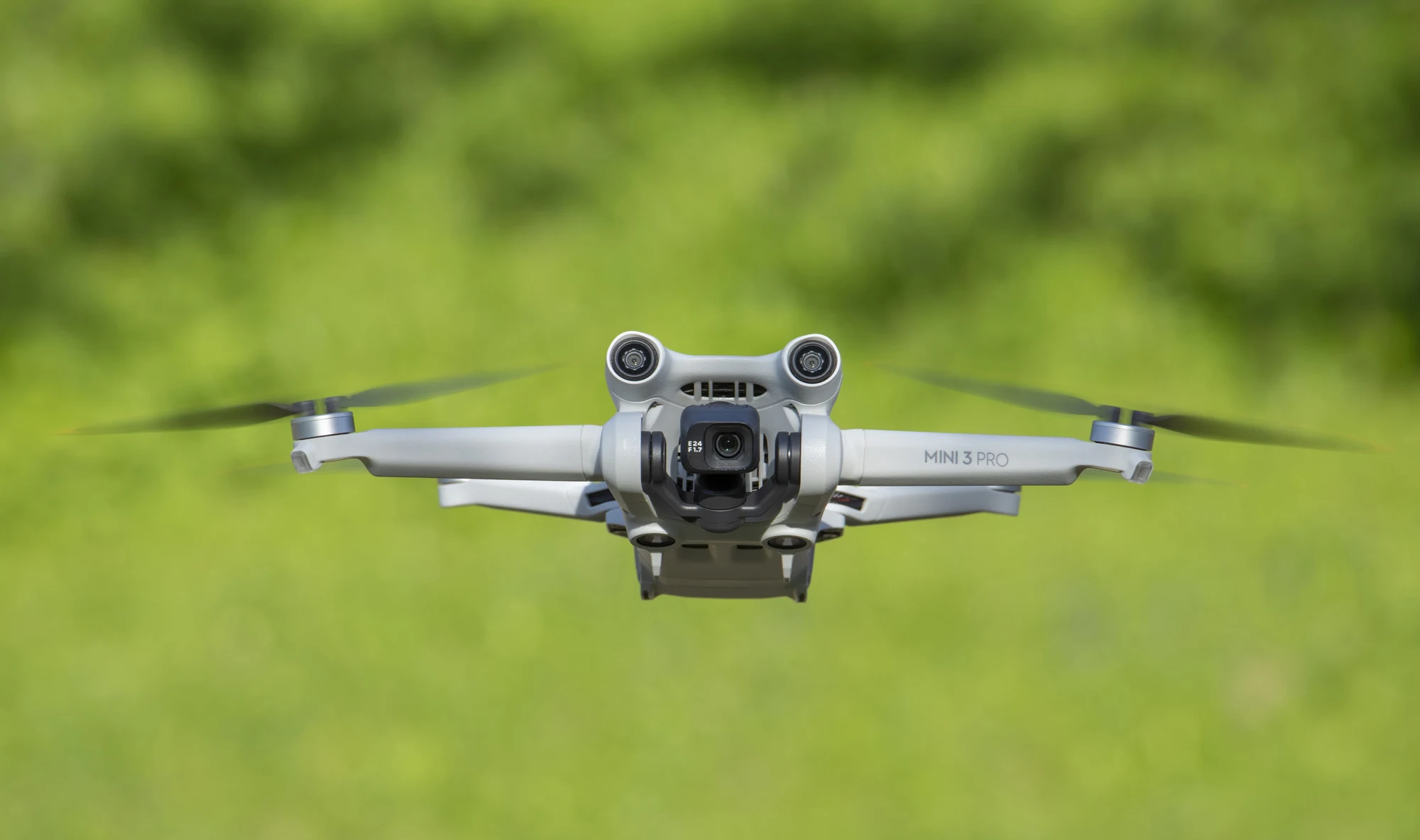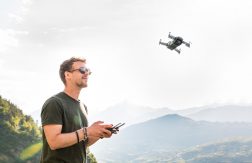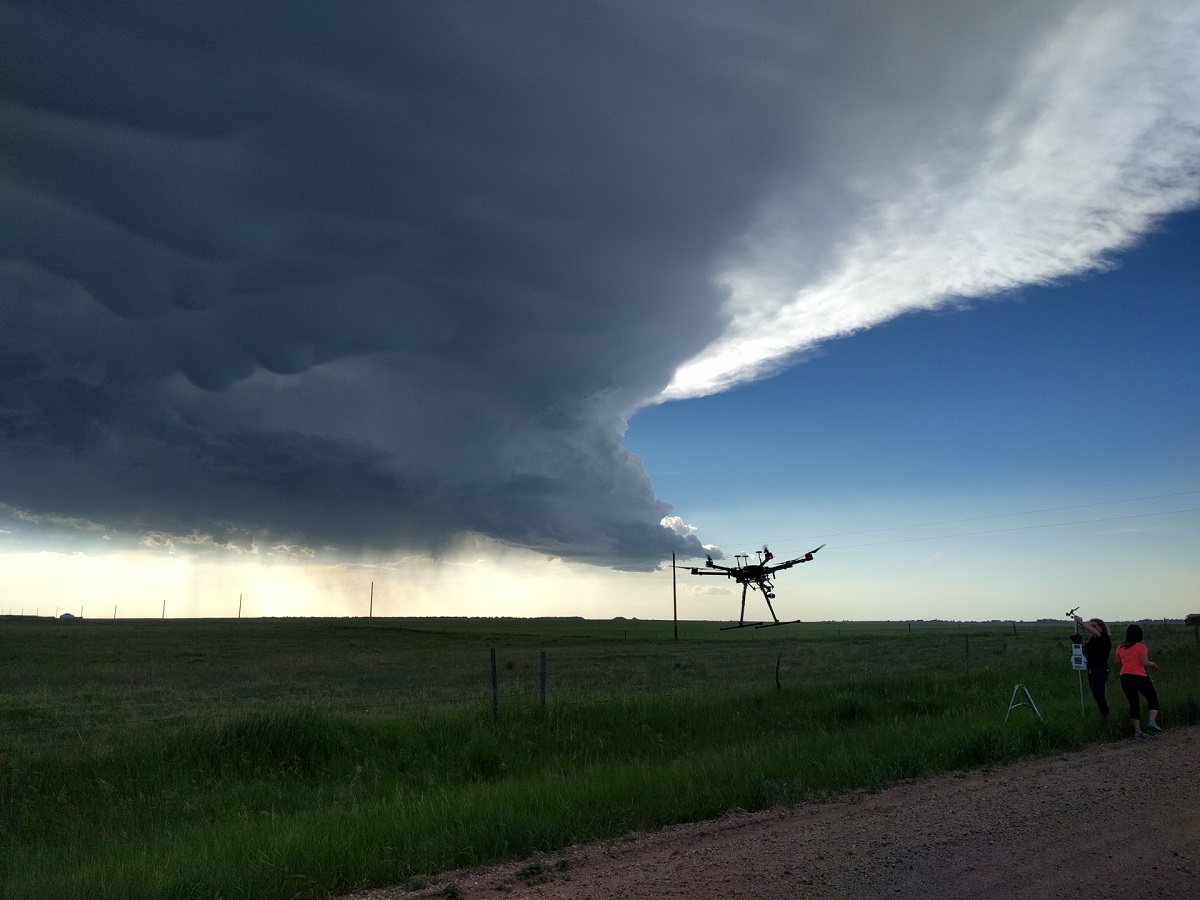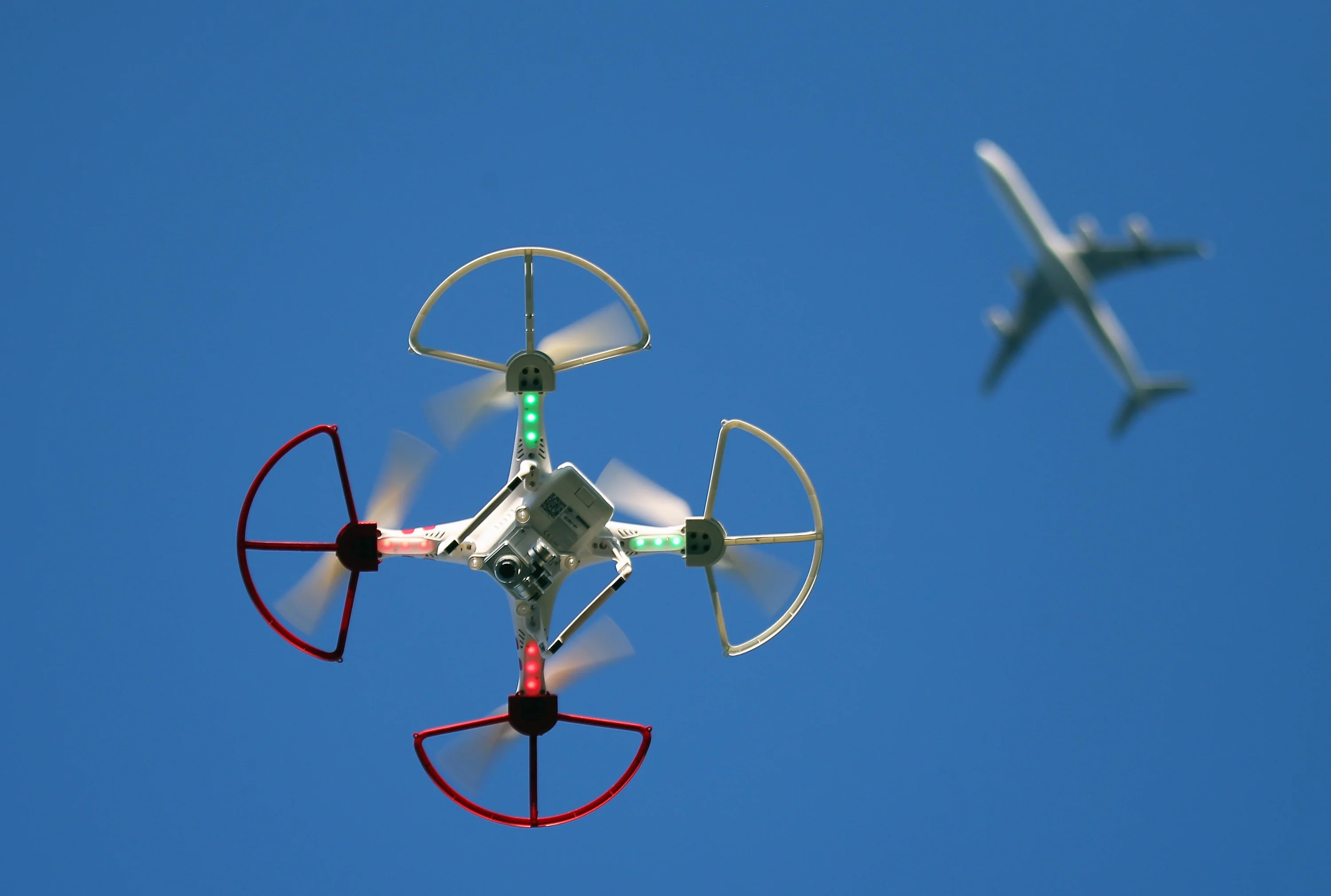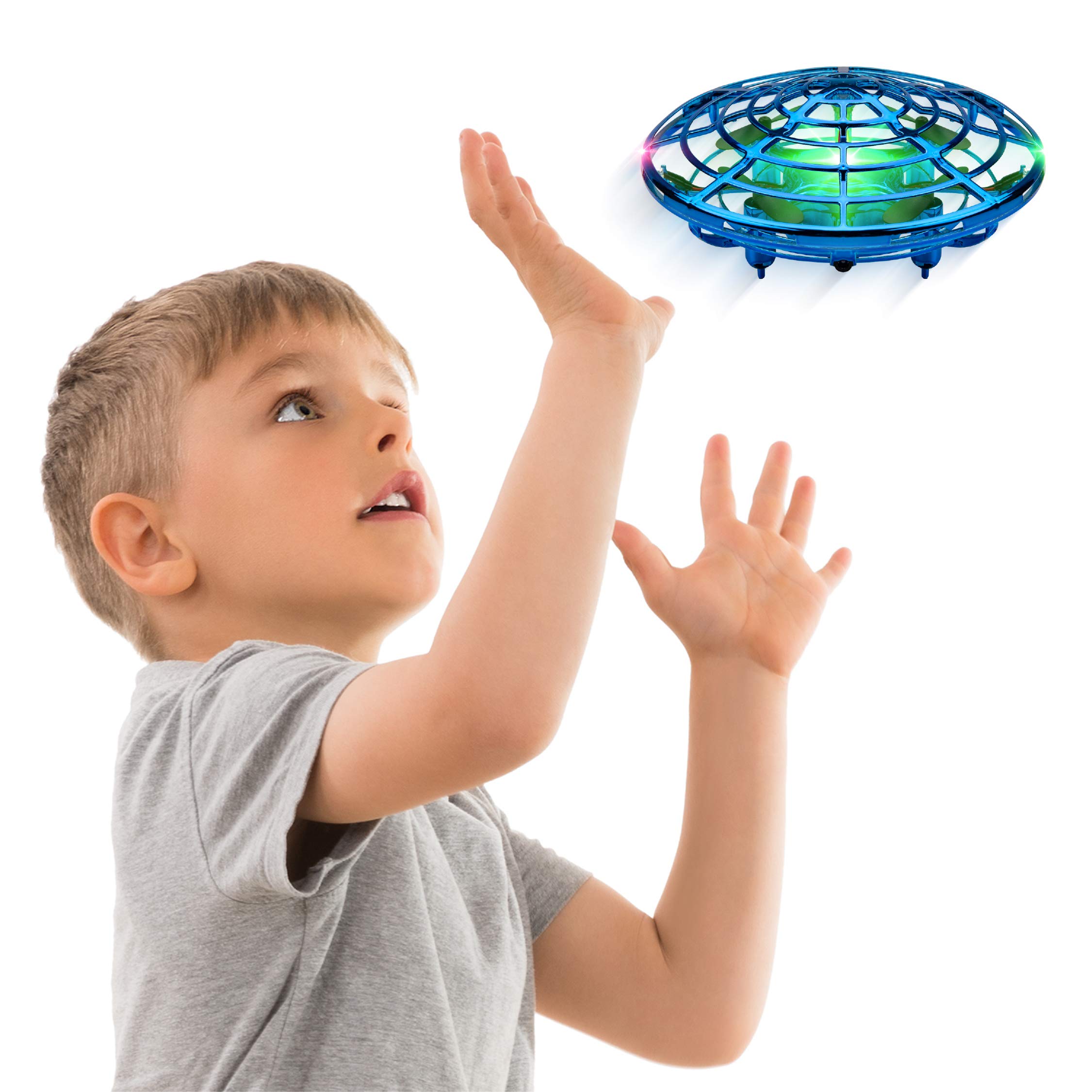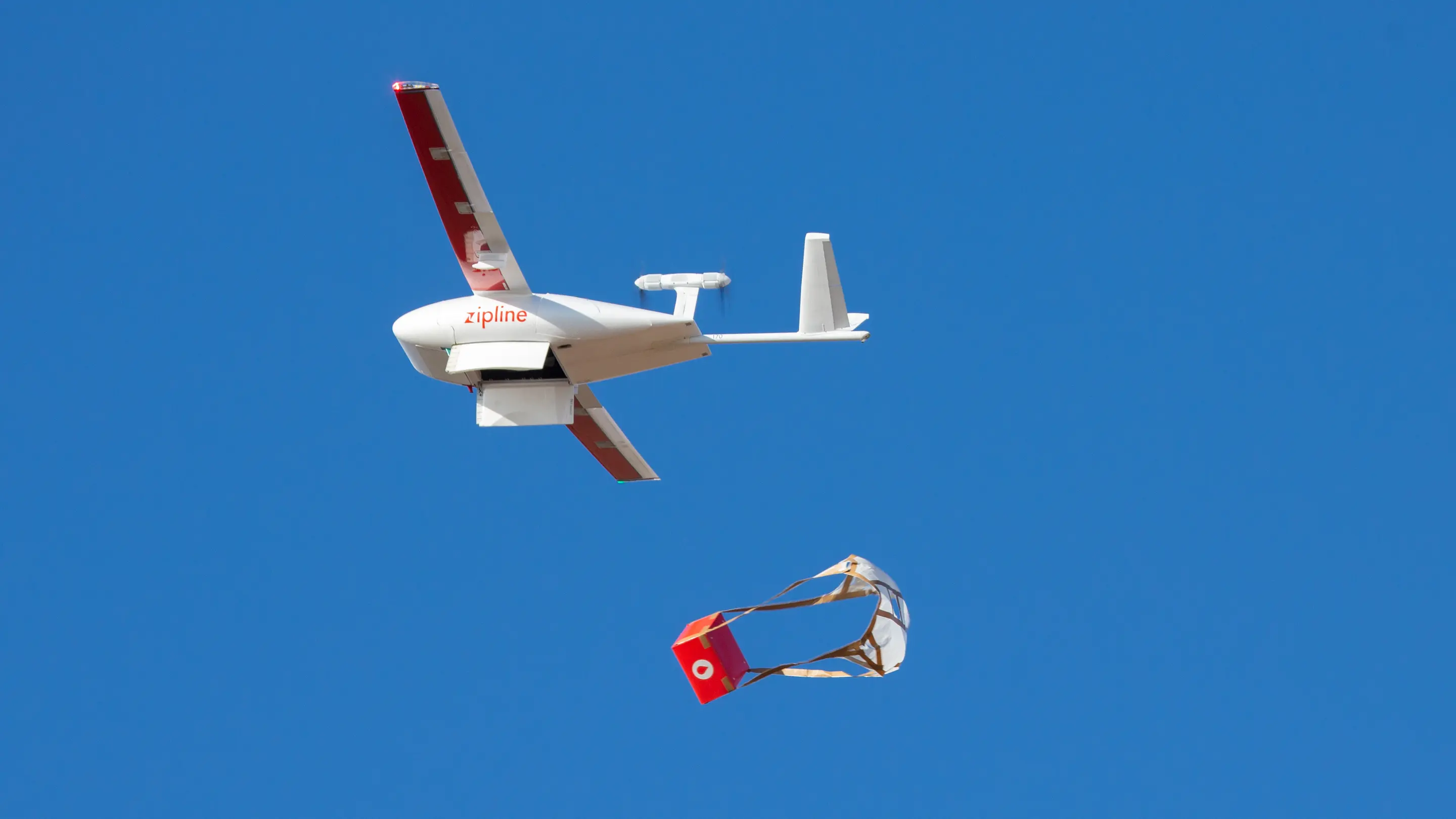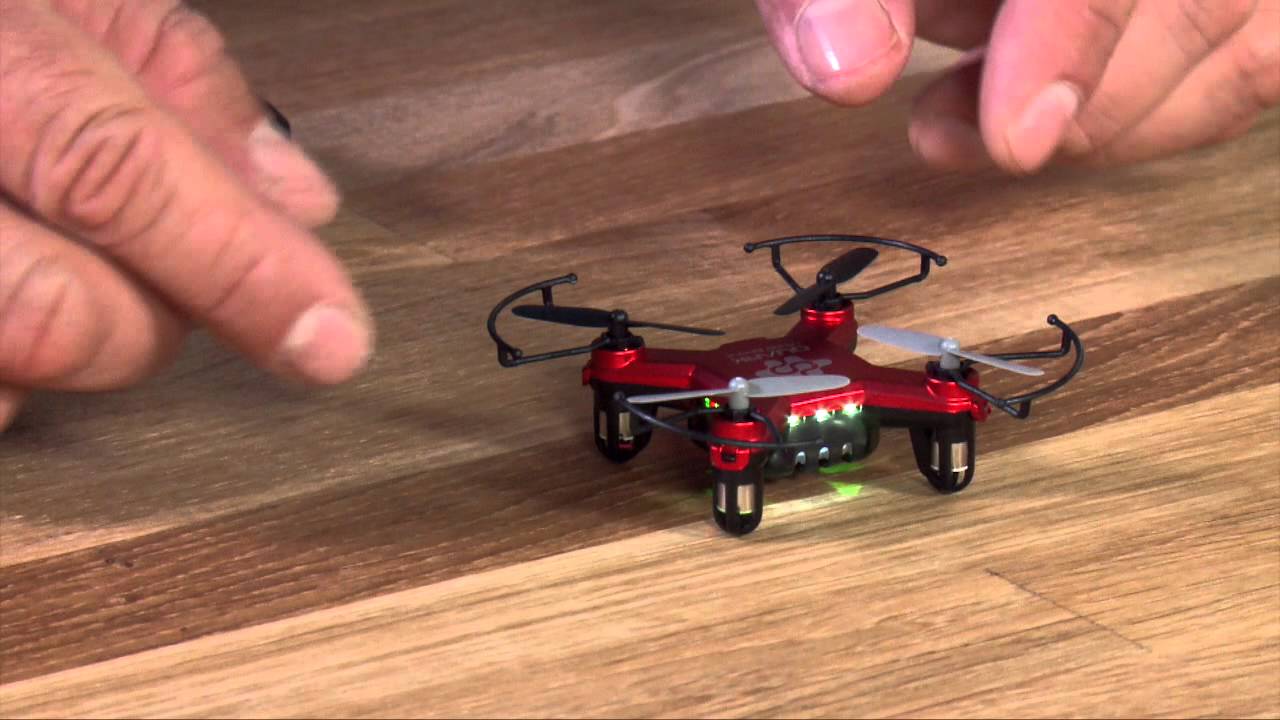Introduction
Drones have become increasingly popular in recent years, providing a unique perspective and countless opportunities for aerial photography, videography, and exploration. However, it is essential to understand the regulations and restrictions that govern drone usage to ensure safe and legal operations. Knowing where you can fly a drone is crucial to avoid potential fines, penalties, or even legal consequences.
Navigating the complex web of drone regulations can be daunting, but this article will guide you through various locations where drone flying is permitted and help you make informed decisions. Whether you are a drone hobbyist, professional photographer, or an adventure enthusiast, this guide will provide valuable information on places where your drone can take flight.
From public parks and recreational areas to specialized drone-friendly destinations, there are numerous places where you can spread your wings and explore the skies. However, it is important to note that regulations may vary depending on your location, so it is always advisable to check local rules and regulations before taking to the air.
Before delving into specific drone flying locations, it is crucial to familiarize yourself with some general regulations. These regulations include flying within line of sight, maintaining a safe altitude, avoiding restricted airspace, and respecting the privacy of others. Additionally, it is important to register your drone (if required) and obtain necessary certifications, if any, in your country or region.
By adhering to these regulations, you can ensure a safe and enjoyable drone flying experience for yourself and those around you. In the following sections, we will explore various locations where you can legally fly your drone, providing you with a wide range of options to capture stunning aerial footage and unleash your creativity.
Understanding Drone Regulations
Before taking your drone to the skies, it is crucial to have a solid understanding of the regulations that govern drone usage in your area. These regulations are put in place to ensure safety, privacy, and proper airspace management. Familiarizing yourself with the rules and guidelines will help you avoid legal issues and potential accidents.
One of the most important regulations is flying within line of sight. This means that you should always be able to see your drone with your naked eye while it is in flight. This ensures that you have full control and can react to any potential obstacles or hazards in real-time. It is generally prohibited to fly your drone beyond your line of sight, although some countries have exceptions for FPV (First Person View) flying with proper certification.
Maintaining a safe altitude is another crucial aspect of drone regulations. Most countries have set a maximum altitude limit for drone flights, typically around 400 feet or 120 meters above the ground. Staying within this limit ensures that your drone does not interfere with manned aircraft or other airspace users. It is important to note that flying near airports or other restricted airspace can result in severe penalties and legal consequences.
Respecting the privacy of others is also an important consideration when flying a drone. Avoid capturing footage or photographs of individuals without their consent, especially in private spaces. It is advisable to familiarize yourself with local privacy laws to ensure you do not infringe on anyone’s privacy rights while using your drone.
Additionally, many countries require drone operators to register their drones with the appropriate aviation authority. This registration process helps authorities keep track of drones and their operators, ensuring accountability and responsible use. Failure to register your drone when required can result in fines or confiscation.
Furthermore, depending on your region, you may need to obtain certifications or permits to fly your drone in certain areas or for commercial purposes. It is crucial to understand the specific requirements in your area and comply with them to avoid any legal complications.
By understanding and following these regulations, you can enjoy flying your drone safely and responsibly. Remember to regularly check for updates in regulations, as they can change over time. Always stay informed and fly within the boundaries of the law to have an enjoyable and hassle-free drone flying experience.
Public Parks and Recreational Areas
Public parks and recreational areas are often great places for drone enthusiasts to fly their drones. These locations offer spacious open areas, beautiful scenery, and ample opportunities for capturing stunning aerial shots. However, it is important to note that drone regulations may vary from park to park, so it is crucial to check the rules before launching your drone.
Many public parks have specific designated areas or zones where drone flying is permitted. These areas are typically away from high foot traffic and sensitive natural habitats. It is important to respect these designated flying zones and adhere to any restrictions in place.
When flying your drone in public parks, it is essential to follow general drone etiquette. Be mindful of other park-goers and maintain a safe distance from people, animals, and structures. Avoid flying your drone over crowds or near playgrounds to prevent any potential accidents or privacy concerns.
Some parks may have noise restrictions or specific operating hours for drone flying. Pay attention to these regulations and be considerate of other park users. Flying during quieter times or in less populated areas of the park can help ensure a pleasant experience for everyone.
Keep in mind that even if drone flying is permitted in public parks, there may still be certain restrictions in place. For example, some parks may prohibit drones during events or certain times of the year to minimize disruptions or protect wildlife during sensitive periods. Always check for any temporary restrictions or closures before flying your drone in public parks.
Overall, public parks and recreational areas can offer fantastic opportunities for drone flying. However, it is critical to familiarize yourself with the specific rules and regulations of each park and show respect for other park users. By following the guidelines and being mindful of your surroundings, you can enjoy capturing breathtaking aerial footage while enjoying the beauty of these public spaces.
Private Properties
Flying a drone over private properties comes with additional considerations and regulations. When it comes to private properties, the key is to obtain proper permission from the property owner before flying your drone. Without permission, flying your drone over private properties can be a violation of privacy laws and potentially lead to legal consequences.
If you want to capture aerial footage or take photographs of a specific private property using your drone, it is crucial to reach out to the owner and ask for permission. This can typically be done by contacting the property owner directly or through their authorized representatives. Obtaining written permission is often recommended to have a clear record of consent.
In some cases, you may also come across private properties that are designated as No-Fly Zones. These properties can include sensitive government buildings, military installations, or high-security facilities. It is important to respect these restrictions and avoid flying your drone in these areas, even with permission. Failure to comply with No-Fly Zone regulations can result in severe legal consequences.
When flying your drone over private properties, be mindful of surrounding structures and obstacles. Maintain a safe distance from buildings, power lines, and other objects to ensure the safety of your drone and avoid any potential damages.
Remember that private property owners have the right to refuse permission for drone flights over their property for any reason. It is essential to respect their wishes and find alternative locations for your drone activities if necessary. Always prioritize safety, privacy, and respectful collaboration with property owners when flying your drone over private properties.
In summary, flying your drone over private properties requires obtaining proper permission from the property owner. It is necessary to approach the owners, ask for consent, and respect their decisions. By adhering to these guidelines and showing respect for privacy, you can enjoy flying your drone responsibly and legally over private properties.
Unrestricted Airspace
Unrestricted airspace refers to areas where drone flying is generally permitted without specific regulations or restrictions. These areas are typically located away from airports, helipads, and other restricted airspace zones. However, even in unrestricted airspace, it is important to fly your drone responsibly and within the boundaries of local regulations.
Unrestricted airspace can include wide-open spaces such as open fields, rural areas, and uninhabited locations. These areas provide ample room for drone enthusiasts to explore and capture breathtaking footage without major limitations. However, it is still essential to adhere to general drone safety guidelines and respect the privacy of others.
When flying your drone in unrestricted airspace, maintain a safe altitude and be aware of any nearby obstacles or hazards. Remember to keep your drone within line of sight and avoid flying in crowded areas or over private properties without permission. By following these best practices, you can ensure a safe and enjoyable drone flying experience.
It is important to note that even in unrestricted airspace, there may be certain local or regional regulations in place. Some areas may have noise restrictions or ecological sensitivity that needs to be considered. It is advisable to check with local authorities or research the specific area before flying your drone.
Furthermore, while unrestricted airspace may not have specific restrictions, it is essential to stay informed about any temporary or dynamic airspace restrictions that may arise. These can include temporary no-fly zones due to events, emergency situations, or military exercises. Keeping up-to-date with airspace information can help you avoid potential conflicts and legal consequences.
Overall, unrestricted airspace provides drone enthusiasts with the freedom to explore and capture stunning visuals. By flying responsibly and staying informed about local regulations, you can enjoy the benefits of unrestricted airspace while maintaining safety and respecting the environment and others.
National Parks and Wildlife Refuges
National parks and wildlife refuges are often home to breathtaking landscapes and diverse wildlife, making them attractive locations for drone enthusiasts. However, it is important to understand that each park and refuge may have specific regulations and restrictions on drone usage. It is crucial to research and comply with these guidelines to ensure the preservation of the park’s natural wonders.
Many national parks and wildlife refuges have outright bans on drone flying to protect the park’s environment, wildlife, and visitor experience. It is essential to respect these regulations and refrain from flying your drone in prohibited areas. Violating these rules can result in fines, confiscation of equipment, and legal consequences.
In some cases, certain parks may allow drone flying with special permits or permissions. These permits may be granted for specific purposes such as research, conservation efforts, or professional film and photography projects. If you have a valid reason for flying your drone in a national park or wildlife refuge, it is advisable to contact park authorities and obtain the necessary permissions well in advance.
When flying your drone in national parks and wildlife refuges where it is allowed, always prioritize the safety and well-being of the wildlife and other park visitors. Maintain a safe distance from animals, nesting sites, or sensitive habitats to avoid distressing or disturbing them. Keep in mind that the primary goal of these protected areas is conservation, so your drone activities should align with that objective.
It is also important to be mindful of the impact your drone may have on the natural soundscape of the park. Excessive noise can disrupt wildlife and detract from the tranquil experience that national parks and wildlife refuges aim to provide. Maintain a respectful distance from other park visitors and minimize any unnecessary noise generated by your drone.
Lastly, some national parks and wildlife refuges may require the registration and identification of drones before entering the park. This helps in ensuring accountability and responsible drone usage within the protected area. Research the specific requirements of the park or refuge you plan to visit and comply with the registration process if necessary to avoid any unwanted complications.
In summary, national parks and wildlife refuges offer extraordinary natural beauty and opportunities for aerial photography. However, it is important to familiarize yourself with the regulations of each park and refuge, obtain any necessary permissions or permits, and fly responsibly to protect the environment, wildlife, and visitor experience. By following these guidelines, you can enjoy the wonders of these protected areas while preserving their integrity for future generations.
Beaches and Coastal Areas
Beaches and coastal areas provide a stunning backdrop for aerial photography and drone flying. The open expanse of the shoreline and the panoramic views of the ocean make these locations ideal for capturing breathtaking footage. However, it is important to be aware of the specific regulations and guidelines in place for drone usage at beaches and coastal areas.
When flying your drone at beaches, it is crucial to consider the privacy and safety of beachgoers. Avoid flying your drone over crowded areas or directly above people without their consent. Respect the personal space of others and maintain a safe distance from individuals and groups to ensure a positive experience for everyone.
Additionally, it is important to be mindful of the potential impact on marine wildlife. Coastal areas are often home to a variety of seabirds and marine mammals, so it is crucial to fly your drone in a way that minimally disturbs or causes stress to these animals. Keep a safe distance from nesting sites or protected habitats to avoid any unintended disturbance.
Many beaches and coastal areas may have specific rules and regulations regarding drone usage. Some beaches may prohibit drone flying altogether or have designated areas for drone flying. It is essential to research and comply with these regulations to avoid any penalties or negative encounters with park rangers or law enforcement.
It is crucial to be aware of any temporary flight restrictions or special events that may limit or prohibit drone flying at beaches and coastal areas. Certain events such as fireworks displays, concerts, or high-profile gatherings may create temporary flight restrictions for the safety and privacy of all attendees. Stay informed and plan your drone activities accordingly to avoid any conflicts or legal issues.
Lastly, when flying your drone at beaches and coastal areas, be mindful of weather conditions and their impact on your drone’s flight capabilities. Strong winds, saltwater spray, and sandy conditions can pose challenges and potential risks to your drone. Fly responsibly and maintain control of your drone at all times to ensure a safe and successful flight.
In summary, beaches and coastal areas offer breathtaking scenery for drone flying and photography. However, it is essential to respect the privacy and safety of beachgoers, minimize disturbance to marine wildlife, and comply with any specific regulations in place. By following these guidelines and practicing responsible drone flying, you can capture stunning visuals while respecting the natural beauty of these coastal environments.
Industrial Sites and Construction Zones
Industrial sites and construction zones can provide unique opportunities for drone enthusiasts to capture footage of large-scale infrastructure projects, architectural marvels, or industrial operations. However, flying your drone in these areas requires careful consideration of safety, regulations, and potential hazards.
Before flying your drone in an industrial site or construction zone, it is important to obtain the necessary permissions from the site owners or managers. These locations often have restricted access and specific safety protocols in place. Contact the relevant authorities or project managers to seek approval and understand any specific guidelines that need to be followed.
Industrial sites and construction zones can be complex environments with potential risks such as heavy machinery, ongoing construction work, or hazardous materials. It is crucial to evaluate these risks and ensure that flying a drone in the area does not interfere with or pose any danger to the ongoing operations or the safety of the workers.
When flying your drone in these areas, it is essential to maintain a safe distance from any equipment, machinery, or workers. Keep in mind that certain activities or areas may be off-limits for drone flying due to safety concerns. Always follow any instructions or guidelines provided by the site managers to ensure a safe and incident-free flight.
Additionally, industrial sites and construction zones often have their own set of regulations or local ordinances that govern drone usage. Some areas may require you to obtain specific permits or certifications to fly your drone in these locations. Research the applicable regulations and ensure compliance to avoid any legal or regulatory issues.
It is important to note that drone flying in industrial areas may raise privacy concerns, especially if the site is located near residential or commercial properties. Respect the privacy of others and do not capture footage or photographs that may infringe on people’s privacy rights. Be aware of your surroundings and avoid flying over sensitive areas such as private residences or secure facilities.
Lastly, remember to exercise caution when flying your drone in industrial sites or construction zones. Be mindful of obstacles, power lines, or other potential hazards that may pose a risk to your drone. And always prioritize safety, both for yourself and those working in the area.
In summary, flying your drone in industrial sites and construction zones offers a unique opportunity to capture fascinating visuals. However, it is important to obtain permissions, follow safety protocols, and comply with site-specific regulations. By being responsible and respectful of the environment and the ongoing operations, you can navigate these areas safely and capture stunning footage with your drone.
Sports Fields and Stadiums
Sports fields and stadiums provide an exciting and dynamic environment for drone enthusiasts to capture aerial footage of sporting events or showcase the scale and grandeur of these venues. However, flying your drone in and around sports fields and stadiums requires awareness of the specific rules, regulations, and safety considerations in place.
When it comes to flying your drone in sports fields and stadiums, the primary concern is the safety and well-being of the athletes, spectators, and staff. Due to the potential risks and distractions associated with drone flying, many stadiums and sports fields have explicit prohibitions on drone usage during events. It is crucial to respect these regulations and refrain from flying your drone during games or practices.
Outside of official events or games, some stadiums and sports fields may have designated times or areas where drone flying is allowed. If you are planning to capture footage or photographs during non-event times, it is important to contact the stadium management or relevant authorities to obtain permission and understand any specific guidelines in place.
When flying your drone in sports fields or stadiums, it is essential to maintain a safe distance from people and structures. Avoid flying over crowded areas, especially during active games or practices. Ensure that your flight path does not interfere with the athletes, spectators, or the venue’s operations.
Respecting the privacy of individuals is paramount when flying your drone in sports fields and stadiums. Avoid capturing close-ups of individuals without their consent, and be mindful of any sensitive areas such as locker rooms or other restricted-access areas. Prioritize privacy and use your drone responsibly to avoid any legal or ethical issues.
Additionally, be aware of any airspace restrictions or temporary flight restrictions in effect around sports fields and stadiums. These restrictions may be in place due to nearby airports, sensitive security areas, or other airspace considerations. Always check for any NOTAMs (Notices to Airmen) or local regulations to ensure compliance and avoid any inadvertent violations.
In summary, flying your drone in sports fields and stadiums can provide exciting opportunities for capturing aerial footage. However, it is crucial to understand and adhere to the specific rules and regulations in place for each venue. By prioritizing safety, respecting privacy, and complying with all guidelines, you can enjoy your drone flying experiences and capture stunning visuals in these dynamic settings.
Military Bases and Government Facilities
It is important to note that flying a drone near military bases and government facilities is highly regulated and comes with potential risks and legal consequences. These locations have strict security protocols in place to ensure the safety and protection of personnel and sensitive information. Therefore, it is crucial to understand and respect the restrictions that govern drone flying in these areas.
Most military bases and government facilities have explicit prohibitions on drone usage within their airspace and surrounding areas. These restrictions are in place to prevent unauthorized surveillance, potential threats, and interference with operations. It is essential to strictly adhere to these guidelines to avoid any potential legal complications or endangerment to national security.
It is critical to note that military bases and government facilities often have enhanced security measures and surveillance systems that can detect and track unauthorized drones in their airspace. Attempting to fly a drone in these areas without proper authorization can lead to severe penalties, including fines, confiscation of equipment, and potential criminal charges.
If there is a legitimate reason for flying a drone near military bases or government facilities, it is necessary to obtain prior approval from the appropriate authorities. This may involve contacting the base or facility directly, providing detailed information about your intended flight, and obtaining any necessary permits or certifications.
Even with authorization, be prepared for additional security measures, such as on-site escorts or specific flight restrictions. Strict adherence to the conditions set by military bases and government facilities is essential to ensure the safety and security of all parties involved.
It is crucial to prioritize safety and respect the privacy of military personnel and government employees. Avoid capturing footage or photographs that may reveal sensitive information or compromise security protocols. Be mindful of the significance of these locations and understand the potential risks associated with any unauthorized actions.
In summary, flying a drone near military bases and government facilities requires strict compliance with regulations and prior authorization. These locations have stringent security measures in place to protect national security, and any unauthorized drone activities can have severe consequences. Understanding and respecting the restrictions set by these facilities is crucial to ensure safety, security, and legality.
Drone-Friendly Tourist Destinations
Drone-friendly tourist destinations are becoming increasingly popular among drone enthusiasts who are looking to explore new landscapes and capture stunning aerial footage. These destinations recognize the growing interest in drone photography and have established specific regulations and guidelines to accommodate drone users. Here are some notable drone-friendly tourist destinations to consider for your next adventure.
-
- Santorini, Greece: With its breathtaking sunsets, whitewashed buildings, and stunning landscapes, Santorini offers a picturesque setting for drone photography. Drone flying is generally permitted in most areas of the island, allowing you to capture unique aerial perspectives of the iconic blue-domed churches and rugged cliffs.
-
- Maui, Hawaii: The diverse landscapes of Maui, from pristine beaches to lush rainforests and towering volcanoes, make it a paradise for drone enthusiasts. While there are certain restrictions and guidelines in place, you can still capture incredible footage of the famous Road to Hana, the Haleakala Crater, or the stunning coastlines.
-
- Grand Canyon National Park, USA: The majestic beauty of the Grand Canyon is truly awe-inspiring from ground level, but imagine capturing its vastness and intricate details from above. The National Park Service allows drone flying in designated areas, allowing you to capture the stunning geological formations and panoramic vistas.
-
- Queenstown, New Zealand: Known as the adventure capital of the world, Queenstown offers incredible landscapes for drone photography. From the picturesque Lake Wakatipu to the Remarkables mountain range, there are plenty of opportunities to capture breathtaking footage. However, it is important to comply with local regulations and respect the privacy of others.
-
- Jeju Island, South Korea: Jeju Island’s natural wonders, including stunning waterfalls, volcanic landscapes, and beautiful coastlines, make it a popular drone-friendly destination. However, specific areas restrict drone usage, such as nature reserves or cultural heritage sites. Research the guidelines and fly responsibly to preserve the island’s delicate ecosystems.
While these destinations are known for being drone-friendly, it is still important to research and adhere to the specific rules and regulations of each location. Always check for any temporary flight restrictions, obtain necessary permits, and fly responsibly to ensure a positive experience for yourself and others. Respecting the environment, privacy, and safety guidelines will help preserve these beautiful destinations for future generations.
Conclusion
As a drone enthusiast, knowing where you can fly your drone legally and responsibly is essential. Understanding the specific regulations and guidelines for different locations can help you avoid legal issues, ensure the safety of others, and respect the environment.
In this article, we explored various locations where you can fly a drone, including public parks, beaches, unrestricted airspace, and tourist destinations. We also discussed the importance of understanding drone regulations, obtaining permissions, and respecting privacy.
When flying your drone, always prioritize safety by following general guidelines such as maintaining line of sight, flying at a safe altitude, and avoiding restricted airspace. This not only ensures a safe experience for yourself and others but also contributes to the positive image of the drone community as a whole.
Remember to research and comply with specific regulations in each location, as they may vary based on local laws and restrictions. Obtain permission from property owners, government authorities, or event organizers when necessary, and be aware of any temporary flight restrictions or sensitive areas where drone flying is prohibited.
Respecting the privacy and safety of others is paramount when flying your drone. Avoid capturing footage or photographs that may infringe on others’ privacy rights, and always be aware of potential risks or hazards in the surrounding environment.
By being considerate, informed, and responsible, you can enjoy the incredible opportunities and creative possibilities that drone flying offers. Capture stunning aerial imagery, explore new perspectives, and make unforgettable memories while following the regulations and guidelines set for each location.
Happy flying!









